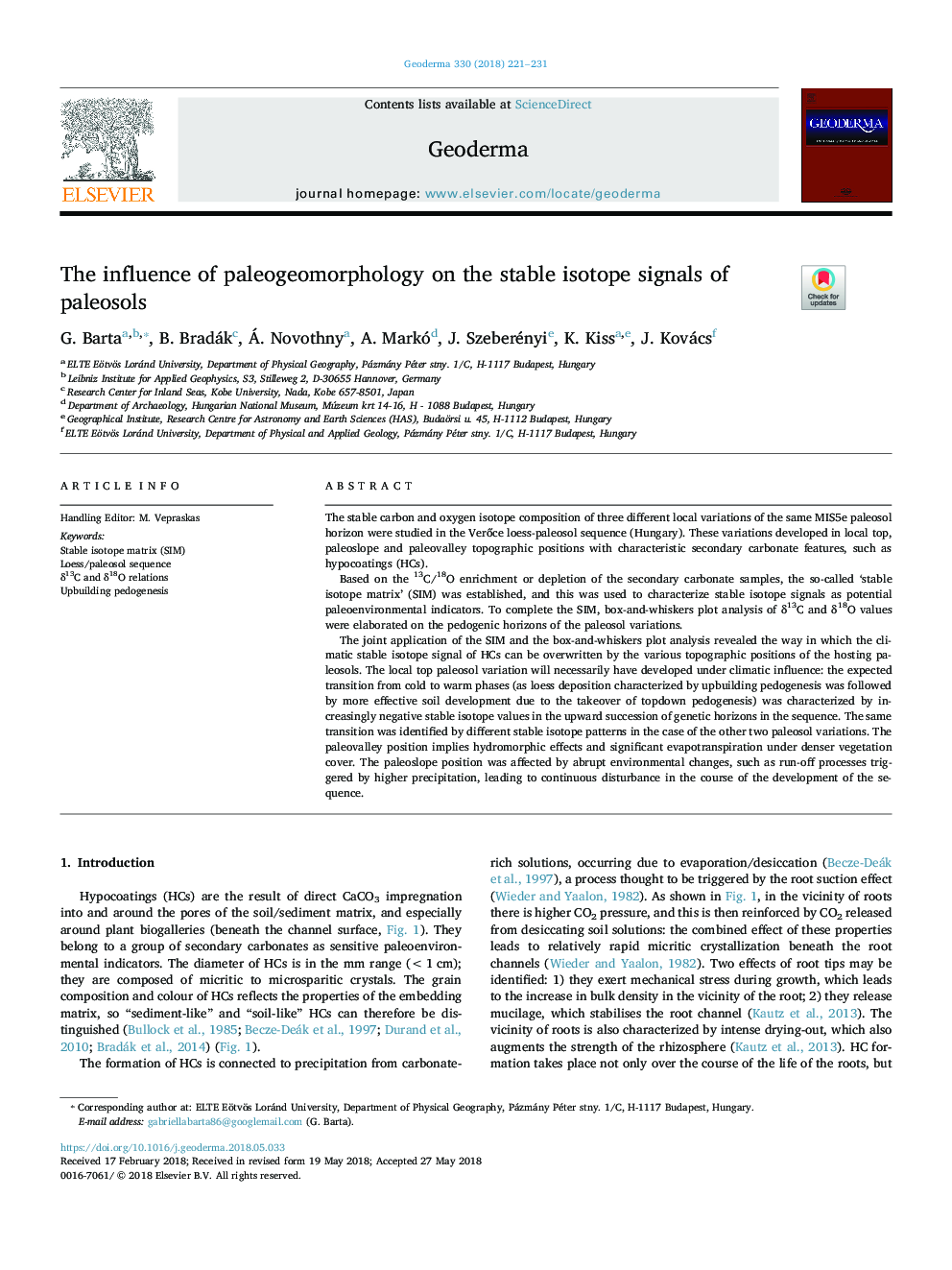| Article ID | Journal | Published Year | Pages | File Type |
|---|---|---|---|---|
| 8893919 | Geoderma | 2018 | 11 Pages |
Abstract
The joint application of the SIM and the box-and-whiskers plot analysis revealed the way in which the climatic stable isotope signal of HCs can be overwritten by the various topographic positions of the hosting paleosols. The local top paleosol variation will necessarily have developed under climatic influence: the expected transition from cold to warm phases (as loess deposition characterized by upbuilding pedogenesis was followed by more effective soil development due to the takeover of topdown pedogenesis) was characterized by increasingly negative stable isotope values in the upward succession of genetic horizons in the sequence. The same transition was identified by different stable isotope patterns in the case of the other two paleosol variations. The paleovalley position implies hydromorphic effects and significant evapotranspiration under denser vegetation cover. The paleoslope position was affected by abrupt environmental changes, such as run-off processes triggered by higher precipitation, leading to continuous disturbance in the course of the development of the sequence.
Related Topics
Physical Sciences and Engineering
Earth and Planetary Sciences
Earth-Surface Processes
Authors
G. Barta, B. Bradák, Á. Novothny, A. Markó, J. Szeberényi, K. Kiss, J. Kovács,
